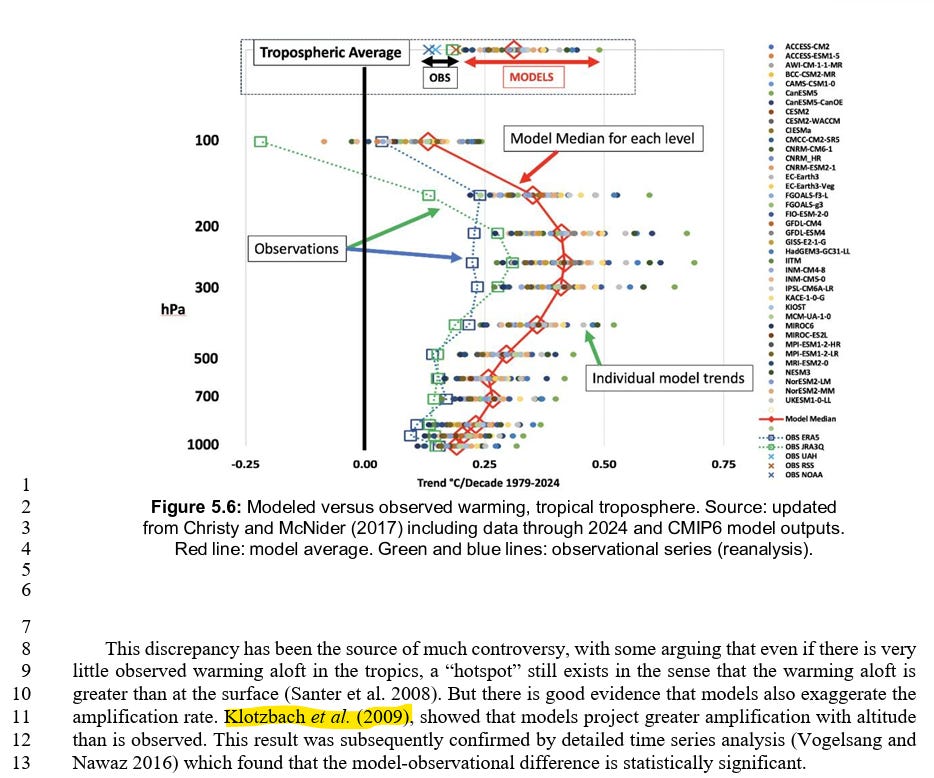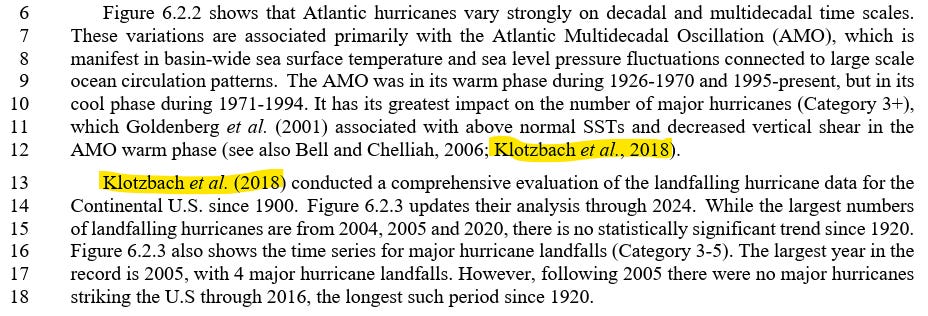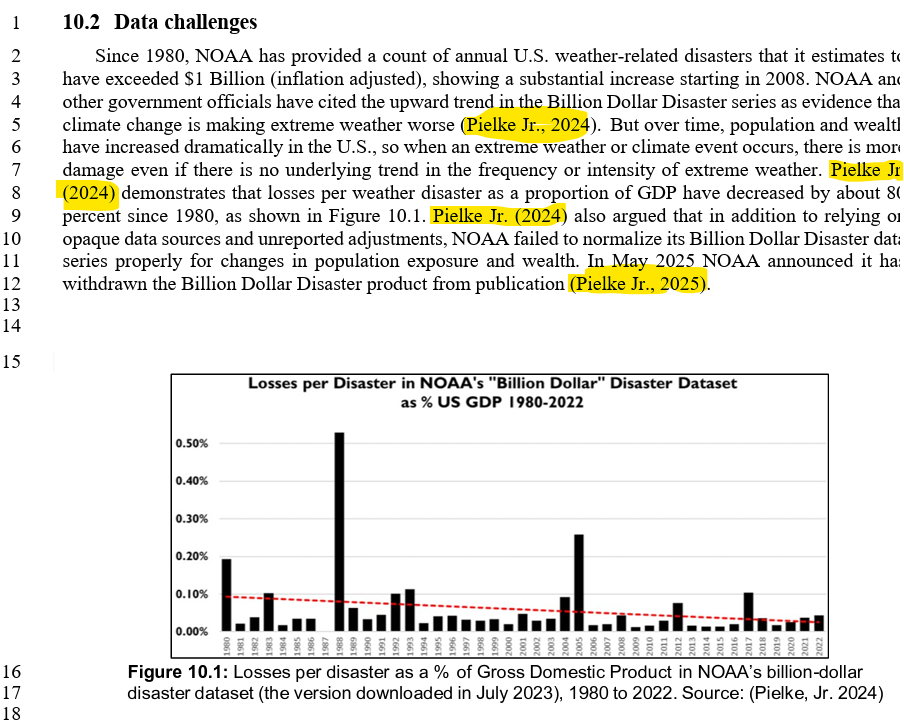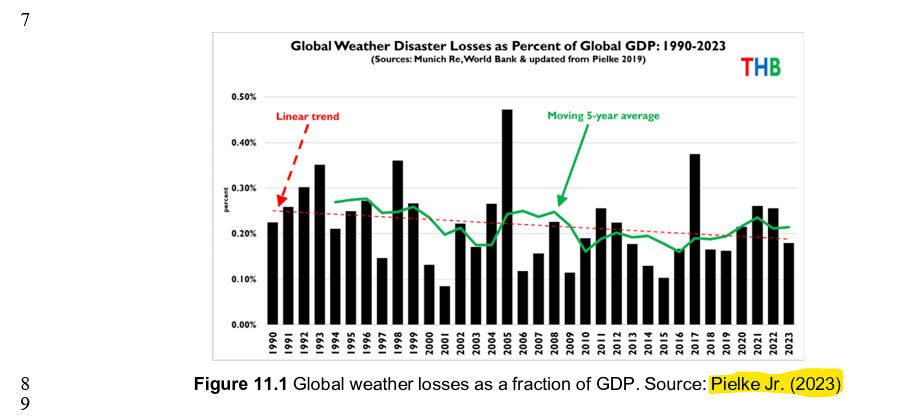Last week, a colleague of mine sent me a copy of an email that they had received from ClimateBrief, a UK-based advocacy journalism group. The email asked for examples of how their published research had been “falsely or misleadingly characterised” in the Department of Energy (DOE) Climate Working Group (CWG) report.
That email began as follows:
I’m contacting you because we have noticed that at least one of your studies has been cited in a new report published this week by the US Dept of Energy titled, “A Critical Review of Impacts of Greenhouse Gas Emissions on the U.S. Climate.”
A number of scientists cited in the report have already publicly highlighted that their findings have been falsely or misleadingly characterised. It seems that the report is intended to be used as scientific justification by the Trump administration in its efforts to revoke the US Environmental Protection Agency’s “endangerment finding” on greenhouse gases.
Carbon Brief is now seeking your help to assess whether your own study, or indeed your area(s) of expertise more widely, have been mischaracterised in the report. This is part of a wider ‘crowdsourced’ fact-checking effort we are now convening to draw on inputs from experts in their respective fields.
I thought it was curious because I did not receive the same email, despite my (and colleagues) peer-reviewed research being among the most cited in the CWG report. So, as one does in 2025, I called out CarbonBrief on Twitter/X.
Today, perhaps in response to my Tweet, I received the same emailed invitation from CarbonBrief, and with this post I am responding in public.
Before proceeding — while I disagree with the Trump Administration on the EPA endangerment finding, I am always happy to see my (and colleagues’) research accurately cited, even in support of policy arguments I might disagree with. Science does not dictate policy, and research is always subject to multiple valid interpretations in policy and politics.
By my count, the CWG report cites eight peer-reviewed articles that I authored or co-authored, along with three posts from here at THB. Overall, the report refers to my work about 30 times in various chapters. Below, I reproduce the passages from the CWG report that reference our work, and follow those up with my comments on how our work was cited.
Bottom line: Our work has been cited accurately, but I do have some suggestions. Overall grade = a strong A-.
Let’s proceed . . .

These are the two papers referred to in this passage:
- Burgess, M. G., Ritchie, J., Shapland, J., & Pielke, R. (2020). IPCC baseline scenarios have over-projected CO2 emissions and economic growth. Environmental Research Letters, 16(1), 014016.
- Pielke Jr, R., Burgess, M. G., & Ritchie, J. (2022). Plausible 2005-2050 emissions scenarios project between 2 and 3 degrees C of warming by 2100. Environmental Research Letters.
Both papers are accurately cited. I would recommend two edits for greater precision:
- Line 24: “genuinely implausible” should instead be “impossible.”
- Line 28: “trends” should be replaced with “carbon dioxide emissions from fossil fuels and industry.”


One of our papers is referred to in these two passages:
- Pielke, R., & Ritchie, J. (2020). Systemic misuse of scenarios in climate research and assessment. Available at SSRN 3581777.
The paper is accurately cited, but it is a pre-print version that was subsequently peer-reviewed and published as follows, which should be cited instead:
- Pielke Jr, R., & Ritchie, J. (2021). Distorting the view of our climate future: The misuse and abuse of climate pathways and scenarios. Energy Research & Social Science, 72, 101890.
I’d advise the CWG authors to update the publication statistics for RCP8.5 and SSP5-8.5 through 2024 — Google Scholar reports more than 2800 over those three years, and almost 700 so far in 2025, or more than 3 per day. Extreme, implausible scenarios continue to dominate climate science.

This passage accurately cites a paper I co-authored in 2009:
- Klotzbach, P. J., Pielke Sr, R. A., Pielke Jr, R. A., Christy, J. R., & McNider, R. T. (2009). An alternative explanation for differential temperature trends at the surface and in the lower troposphere. Journal of Geophysical Research: Atmospheres, 114(D21).
That paper had a few minor corrections subsequently published, which did not alter the conclusions but which should be cited in the CWG for completeness.
Our paper (which most THB readers will not be aware of) has an interesting backstory — it started out as a dinner table discussion between me and my Dad, resulting in a peer-reviewed publication. You can read our contemporaneous discussion of the paper and its significance here (me) and here (my dad). I discussed it in a follow up analyses here at THB in 2023.

This passage accurately cites a paper of ours from 2018 on trends in various metrics of U.S. hurricanes and their impacts:
- Klotzbach, P. J., Bowen, S. G., Pielke Jr, R., & Bell, M. (2018). Continental US hurricane landfall frequency and associated damage: Observations and future risks. Bulletin of the American Meteorological Society, 99(7), 1359-1376.
I routinely update these data. The CWG might consider also expanding their discussion to include metrics of economic loss (for hurricanes, floods, tornadoes), which do not say anything about climate trends, but do tell us how one measure of impact has evolved. I’ll say more about extreme weather phenomena in a subsequent post.

This passage cites a post accurately from here at THB — the first post in my series on Weather Attribution Alchemy. As the series has six parts, with many citations to peer-reviewed articles — the CWG might cite the entire series. While the posts here at THB are always solid, I would recommend supplementing any references to Substack posts with citations to the relevant peer-reviewed literature, of which THB provides many in support of its analyses and arguments.

This passage cites accurately a paper and a THB post:
- Pielke Jr, R. (2024). Scientific integrity and US “Billion Dollar Disasters”. npj Natural Hazards, 1(1), 12.
- RIP NOAA’s Billion Dollar Disasters, 8 May 2025.
Remarkably, there have been no published responses or critiques of Pielke (2024).


These passages accurately cites two of my papers and a THB blog post that updated Pielke (2019) using its methods:
- Pielke, R. (2019). Tracking progress on the economic costs of disasters under the indicators of the sustainable development goals. Environmental Hazards, 18(1), 1-6.
- Pielke, R. (2020). Economic ‘normalisation’ of disaster losses 1998–2020: a literature review and assessment. Environmental Hazards, 20(2), 93-111.
- Global Disaster Losses: 1990-2023, 12 Jan 2023.
I have here at THB routinely updated the data from both papers — and the figure shown above comes from one of those updates — and through 2025 the arguments in these papers have stood up not just well, but gotten stronger. Here is the 2024 update to the global disaster loss time series.
Bottom line: Our work is widely cited in the DOE CWG report and in each instance cited accurately. I look forward to CarbonBrief and other media coverage.